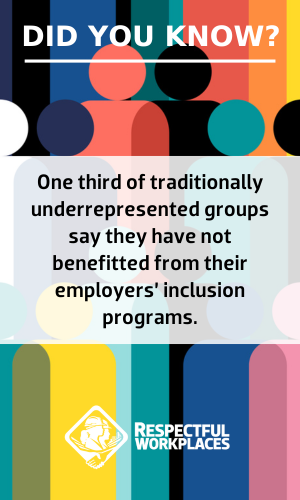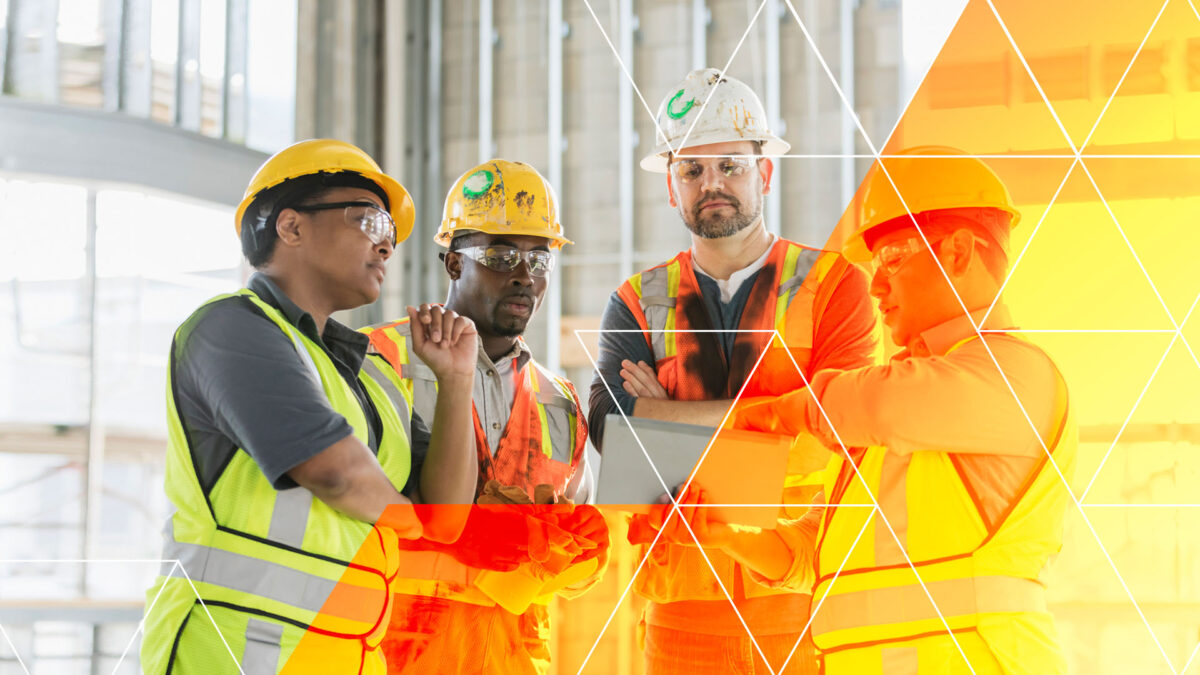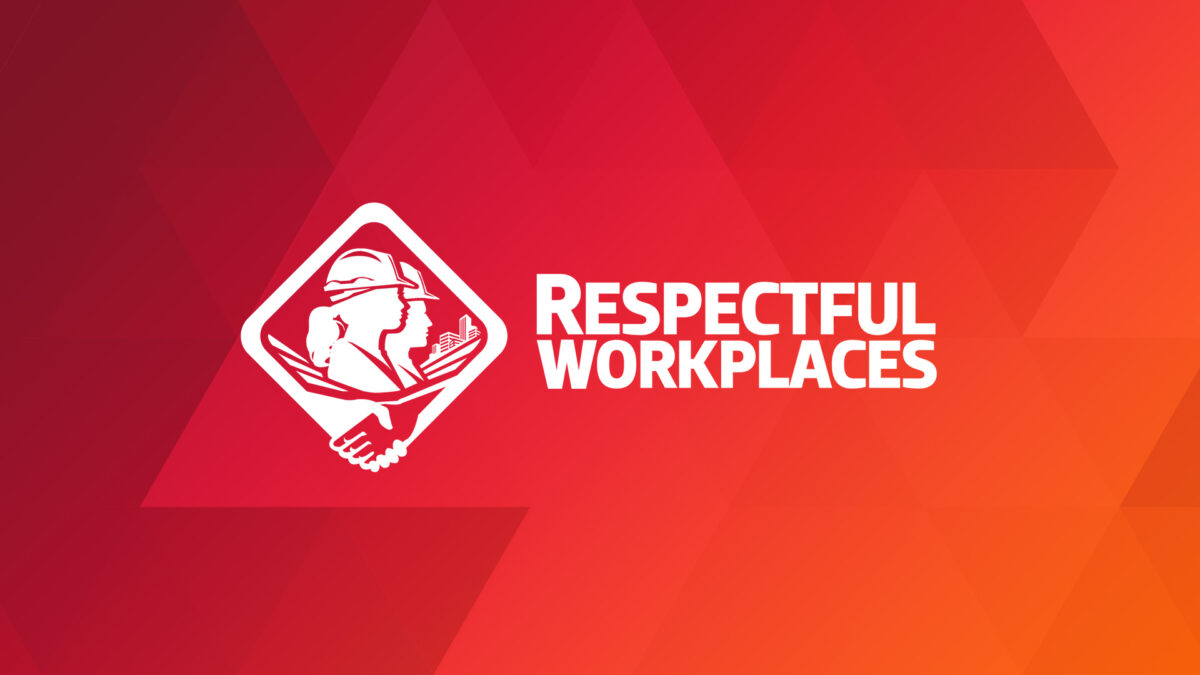Does your organization recognize that barriers to inclusion are experienced differently for different demographic groups?

As we celebrate National Indigenous History Month and Pride Month in June, organizations may wish to take the opportunity to examine the persistently low participation of Indigenous and LGBTQ2S+ individuals in workplaces and leadership teams and recommit to change.
Research shows that organizations around the world recognize the need to create respectful and inclusive workplaces in which many people as possible contribute, collaborate, and ultimately thrive. One primary goal is to unlock the value of human capital in order to gain competitive advantage.
However, success is elusive for most organizations. In a study of 2,000 employees, nearly three quarters were aware that their organization had established one or more inclusion initiatives, yet only one-third of the intended beneficiaries said that they had personally gained from them.
Despite policies and programs to create welcoming and inclusive workplaces for Indigenous people and members of LGBTQ2S+ communities, workers from these groups are not experiencing the intended benefits. They continue to experience higher levels of unfair treatment, isolation, and subtle forms of exclusion such as bias and stereotyping than the majority of workers.
One of the reasons why members of traditionally under-represented groups are not benefitting from inclusion efforts is that organizations tend to develop policies and programs based on broad categories, such as “anti-discrimination” or “racism”.
However, barriers often take different forms for different demographic groups. For example, racism is experienced differently for a man than a woman; discrimination on the job as experienced by an Indigenous person is different from how it is experienced by an LGBTQ2S+ person.
It should also be recognized that within these groups, individuals vary in their multiplicity of identities. These also require distinct approaches to inclusion.
The term “intersectionality” describes the effect that being a member of two or more demographic groups, such as being Indigenous and a woman, has on an individual’s access to opportunities. When an individual has an intersectional identity, experiences of bias, exclusion, and discrimination are disproportionally increased.
For example, in a study of the experiences of Indigenous workers, Indigenous women, because of the impact of their race and gender, reported being on guard to experiences of bias more frequently (67%) than Indigenous men (38%).
Inclusion policies and programs that do not address the complex and multiple barriers experienced by different groups and individuals will not be successful in unlocking the potential of as many people as possible. Addressing barriers with a “one size fits all” approach is not sufficient.
Organizations that wish to unlock the potential of as many people as possible will need to understand and address the distinct barriers experienced by Indigenous and LGBTQ2S+ workers.
Understanding the distinct barriers experienced by Indigenous and LGBTQ2S+ workers
Indigenous People experience barriers related to historical colonial practices. They experience:
Colonial and paternalistic practices
When European settlers arrived in North America, they developed and enforced laws and practices foreign to Indigenous people. This has resulted in a mistrust of organizations and leaders. Organizations often make the mistake of moving too quickly toward policies and programs without the organization-wide understanding of Indigenous culture and without the guidance of Indigenous people themselves. This results in top-down, paternalistic approaches that are ineffective.
Supports and programs that are not culturally sensitive or relevant
Numerous barriers to “mainstream” employment may arise in sequence from an early age. For example, Indigenous youths may lack the opportunity to learn about careers beyond those traditionally aspired to. Organization hiring practices may be too inflexible to recognize the unconventional qualifications of Indigenous workers, thus excluding qualified individuals.
Unfamiliar cultural norms
When Indigenous people seek careers, they often relocate to large urban centres with unfamiliar work and social cultures. An Indigenous worker may not define their success as the ability to climb the ladder and make the most money. Rather they may consider establishing good relationships, meeting family and community obligations, and developing a sense of balance in life as measures of success. These values are unlikely to be recognized by organizational reward systems.
LGBTQ2S+ people also experience barriers related to gender norms and expectations. They experience:
High levels of micro-aggression
LGBTQ2S+ workers continue to experience high levels of micro-aggression, bullying, and other discriminatory attitudes and behaviours in the construction industry. A research study in the UK found that 85% of LGB workers working in construction had heard homophobic comments in the previous 12 months. One respondent said, “homophobic banter is still considered harmless banter.”
Pressure to conform to dominant heterosexual norms
Combined with high levels of microaggression are factors related to the effort required to conceal one’s sexual identity. Research shows that LGBTQ2S+ workers constantly feel pressure to “pass” the test to conform to expected heterosexual behaviours. Just 14% of respondents in the UK survey referenced above said they would be open about their sexuality on site.
Fear of disclosure
It is estimated that LGBTQ2S+ individuals represent up to 21 percent of the population depending on country, age, and whether researchers measure identity, attraction, or behaviour. Yet because of the high levels of discriminatory attitudes and behaviours they experience, LGBTQ2S+ workers do not disclose their identities. The result is that organizations do not know who their LGBTQ2S+ workers are or understand the full range of challenges that they experience.
Addressing the distinct barriers experienced by Indigenous and LGBTQ2S+ workers
According to the Boston Consulting Group, three key elements are required to address the complexity and multiplicity of barriers that members of traditionally underrepresented groups experience.
Redefine why respectful and inclusive policies and programs benefit the organization.
Inclusion policies and programs are not “special” programs for a select few; rather they contribute to the organization’s strategy to ensure that as many people as possible contribute to the organization. Inclusion policies must go beyond simple solutions and address the complex and multiple barriers that any individual may experience.
Reset the focus of inclusion policies and programs.
Many factors that matter to workers and affect workplace performance come together in different combinations with varying degrees of importance. Developing inclusion policies and programs for simple identities such as “women” or “parents” is not sufficient to create an inclusive organization. Rather, addressing the complex and multiple barriers that Indigenous and LGBTQ2S+ workers may experience as an Indigenous female or as an LGBTQ2S+ parent, for example, will be more effective.
Reinvent how to develop solutions.
Using simple, “one size fits-all” analyses of barriers is not sufficient to create respectful and inclusive workplaces for Indigenous and LGTBQ2S+ workers. Organizations must be wide-ranging and include members of those groups in their efforts to develop policies and programs to address the complexity and multiplicity of challenges that these workers experience.
Inclusion policies and programs that address barriers in broad categories such as “anti-discrimination” or “racism” will not be effective in addressing the complex and multiple barriers that Indigenous and LGBTQ2S+ workers experience. Organizations that want to create respectful and inclusive workplaces in which as many people as possible contribute, collaborate and ultimately thrive in the workplace must seek to understand the distinct barriers that workers from these groups experience and address them through wide-ranging and inclusive processes.
Leaders and managers who want to understand how racism and discrimination differently impact different demographic groups could consider participating in An Introduction to Understanding Systemic Racism: A Guide for Leaders and Managers. These barriers are complex and multiple, and this course provides practical guidance and case studies for developing an effective organizational strategy to address them.
Resources
- Architect’s Journal. Survey results: Homophobia Remains Rife in Construction Industry. August 24, 2015.
- Deloitte. (n.d.). Widening the Circle for Indigenous People.
- Novacek, Gabrielle, Krentz, Matt, Lee, Jean. It’s Time to Reimagine Diversity, Equity and Inclusion. Boston Consulting Group. May 2021.
- Silva, Christine, & Warren, Anika K. Building LGBT Inclusive Workplaces. Catalyst.
- Thorpe-Moscon, J., & Ohm, J. (2021). Building Inclusion for Indigenous Peoples in Canadian Workplaces. Catalyst.
- Pakula, Basia & Smith Fowler, Heather. Barriers to employment and training for equity-seeking groups. Social Research and Demonstration Corporation. June 2021.
Read from the beginning. Click here to start at Part 1.
What can an effective Respectful and Inclusive Workplace Program deliver?
- Become an employer of choice – attract, retain, and advance top talent from all sources of labour
- Unlock collaboration and innovation – create high-performing teams through diversity of thought and experience
- Build your brand – your organization will gain a competitive edge as a leader and innovator
Get started today!
The BuildForce Canada Online Respectful and Inclusive Workplace Toolkit includes:
- the Respectful Workplace Online Self-Assessment Tool to assist organization leadership in assessing their current situation and identifying where they may need to make changes
- the Respectful Workplace Policy Framework and Implementation Guide to assist organizations in creating and implementing a policy that supports a respectful and inclusive workplace
- the Respectful Workplace Online Training Course to train workers on how to create and support a respectful and inclusive workplace
- the online course Introduction to Understanding Systemic Racism: A Guide for Leaders and Managers
All the resources you need to create and support a respectful and inclusive workplace!

Respectful and Inclusive Workplaces
